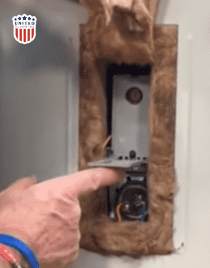What’s Inside An Electric Water Heater? – Plumbing Basics
In American households, electric water heaters are an indispensable part of daily life, providing the comfort and convenience of hot water for showers, dishwashing, and various other tasks. These reliable appliances have evolved over the years to become energy-efficient and eco-friendly, meeting the demands of modern homeowners while reducing environmental impact. In this article, we will explore the key features and benefits of electric water heaters, highlighting their importance in American homes.
The inside of an electric water heater contains several key components that work together to heat and store hot water for domestic use. Let’s explore the internal structure and components of a typical electric water heater:
Tank: The tank is the main body of the water heater and is usually made of steel with a glass lining to prevent corrosion. It holds and stores the water, keeping it hot until needed. Tanks come in various sizes, typically ranging from 20 to 80 gallons or more, depending on the household’s hot water needs.

Thermostat and Heating Element: The thermostat is a temperature control device that monitors the water temperature inside the tank. It signals the heating elements to turn on or off as needed to maintain the preset temperature. Users can adjust the thermostat to set the desired water temperature.

Temperature and Pressure Relief Valve: This safety device is an essential component in case of excessive pressure or temperature buildup inside the tank. If the pressure or temperature exceeds safe levels, the valve opens to release hot water and pressure, preventing potential tank damage.

Cold Dip Tube and Anode Rod: It is where cold water enters the tank. The dip tube ensures that incoming cold water is directed to the bottom of the tank, allowing the hot water to stay at the top for use. An anode rod is a sacrificial metal rod that is suspended inside the tank to help prevent corrosion. It attracts corrosive elements in the water and protects the steel tank from rusting.

Metal drain Valve: Many electric water heaters have a drain valve near the bottom of the tank. This valve allows users to periodically drain and remove sediment buildup in the tank, which can affect the heater’s efficiency.

Electric water heaters have become an integral part of American households, offering energy efficiency, convenience, and environmental benefits. As technology continues to advance, these appliances will only become more efficient and eco-friendly. With their quick recovery times, low maintenance requirements, and compatibility with renewable energy sources, electric water heaters are a reliable and sustainable choice for American homes, ensuring a steady supply of hot water for daily needs while contributing to a greener future.
Post views: 1111

